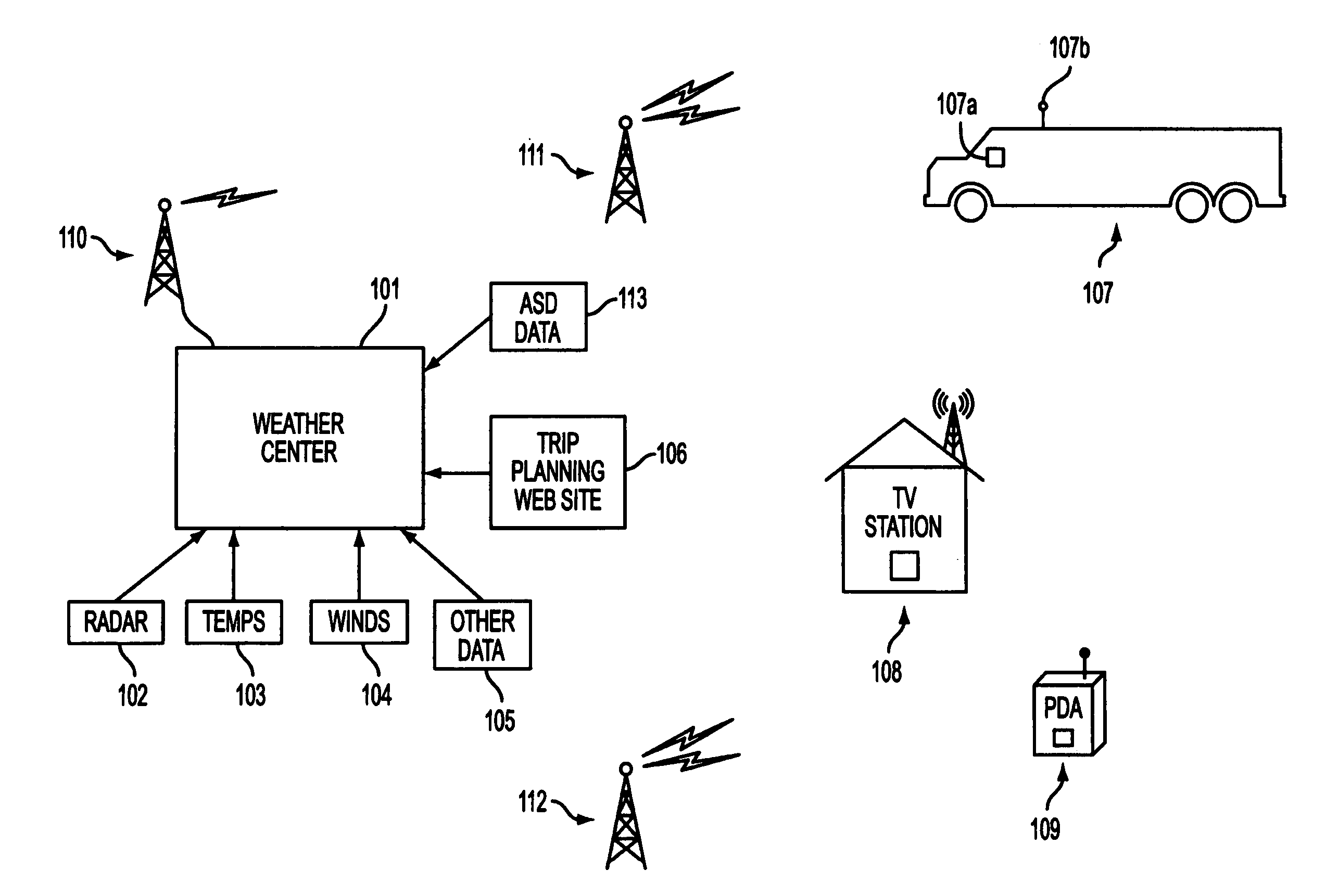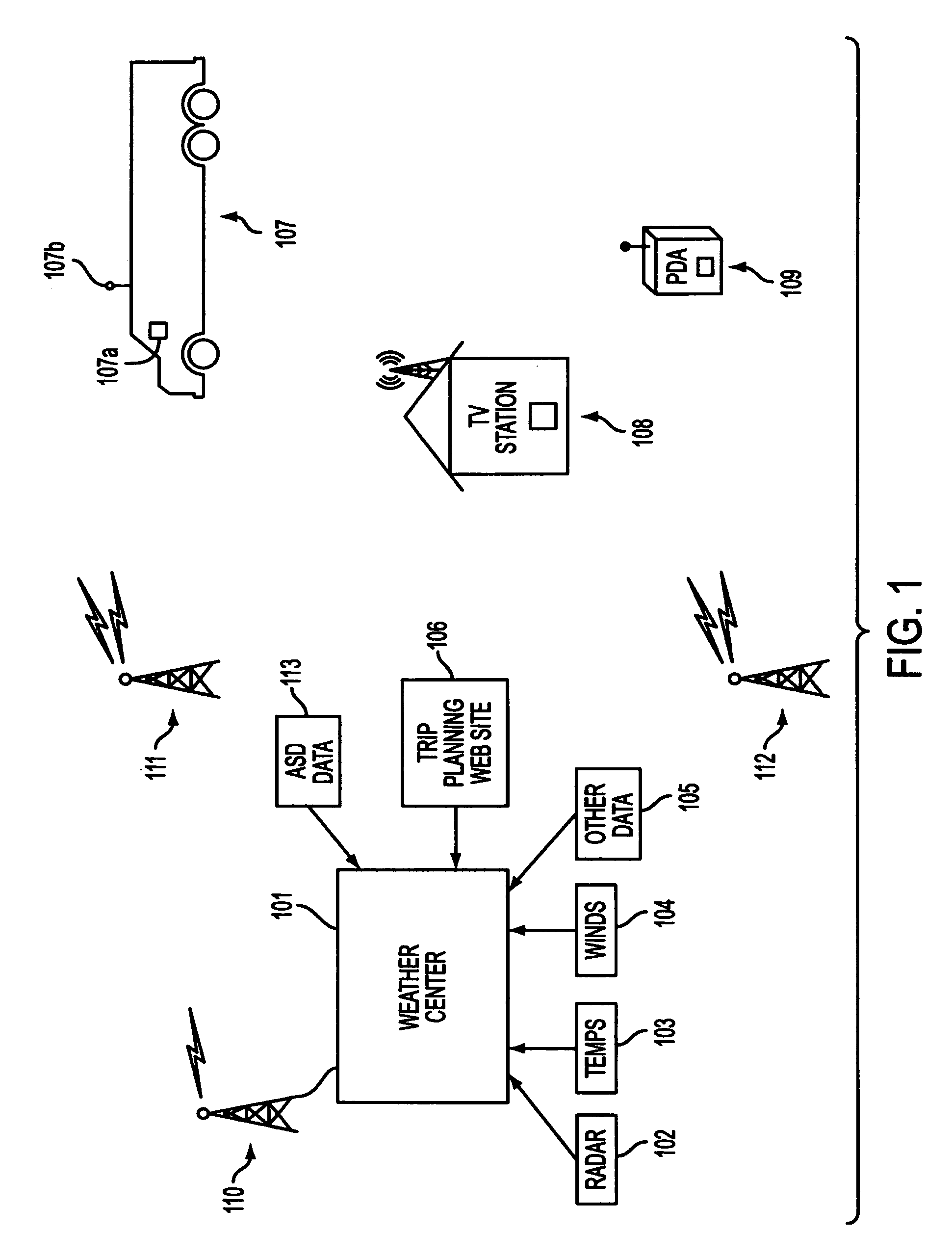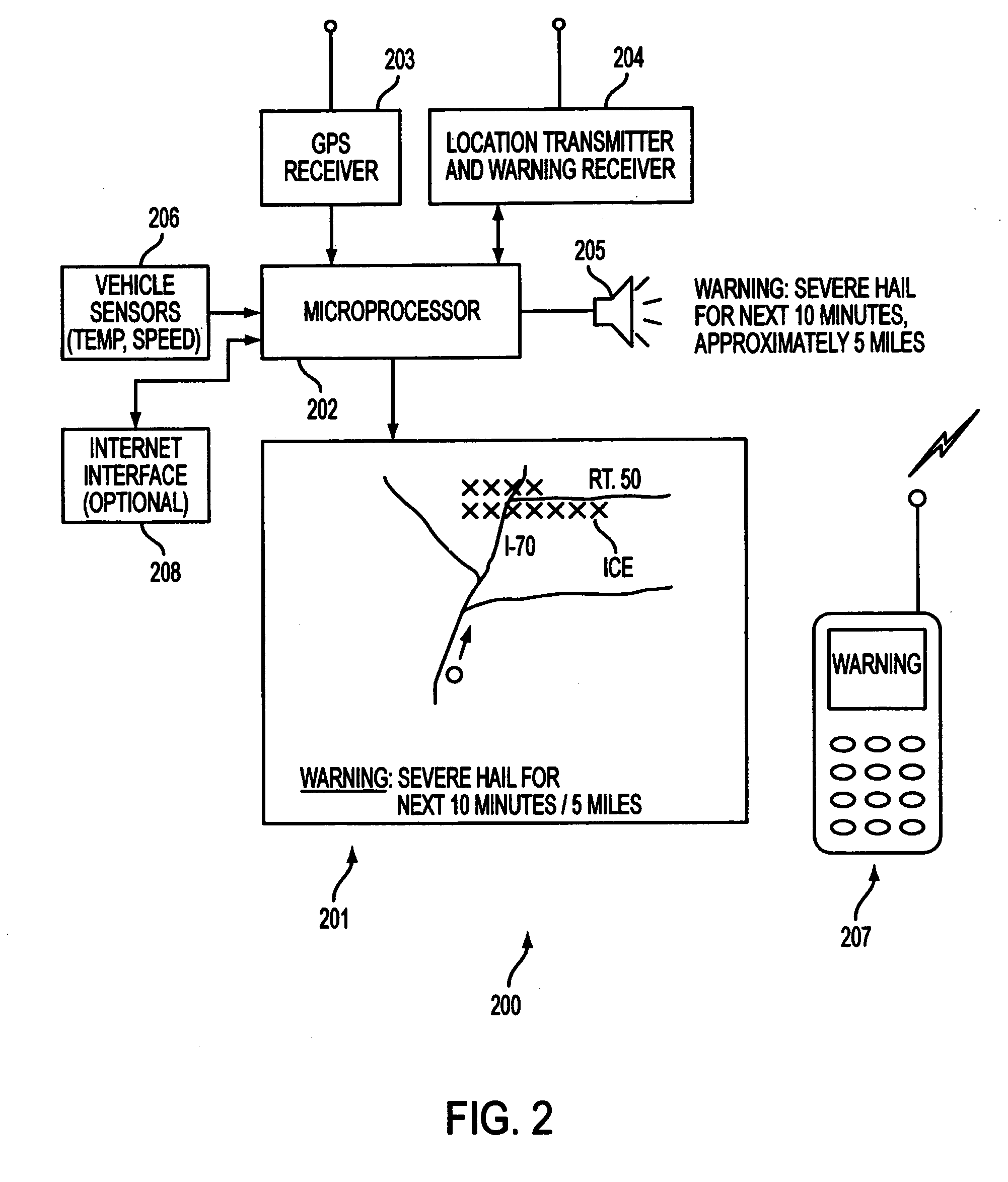User-centric event reporting
a user-centric, event-based technology, applied in the direction of location information based services, alarms, instruments, etc., can solve the problems of not realistically at risk drivers, system cannot provide the kind of information that would permit a vehicle operator, and cannot provide the kind of weather information to the vehicle operator
- Summary
- Abstract
- Description
- Claims
- Application Information
AI Technical Summary
Benefits of technology
Problems solved by technology
Method used
Image
Examples
Embodiment Construction
[0041]FIG. 1 shows a system employing various principles of the present invention. As shown in FIG. 1, a weather center 101 receives weather-related information from various sources, such as one or more radar sources 102, temperature data sources 103, wind data sources 104, and other data sources 105 (including, but not limited to, regional weather stations that provide air and pavement temperature, humidity, and other measurements). One or more antennas 110 are also coupled to weather center 101 to receive information regarding the location of vehicles that have pre-registered to use the system. In addition to or instead of radio frequency communication, this information can be received over the Internet or other computer network, or via dedicated dial-up telephone lines. Additionally, Aircraft Situation Display (ASD) data 113 can be received from various sources, such as the FAA, which distributes information regarding the current location and identity of aircraft.
[0042]In one emb...
PUM
 Login to View More
Login to View More Abstract
Description
Claims
Application Information
 Login to View More
Login to View More - R&D
- Intellectual Property
- Life Sciences
- Materials
- Tech Scout
- Unparalleled Data Quality
- Higher Quality Content
- 60% Fewer Hallucinations
Browse by: Latest US Patents, China's latest patents, Technical Efficacy Thesaurus, Application Domain, Technology Topic, Popular Technical Reports.
© 2025 PatSnap. All rights reserved.Legal|Privacy policy|Modern Slavery Act Transparency Statement|Sitemap|About US| Contact US: help@patsnap.com



